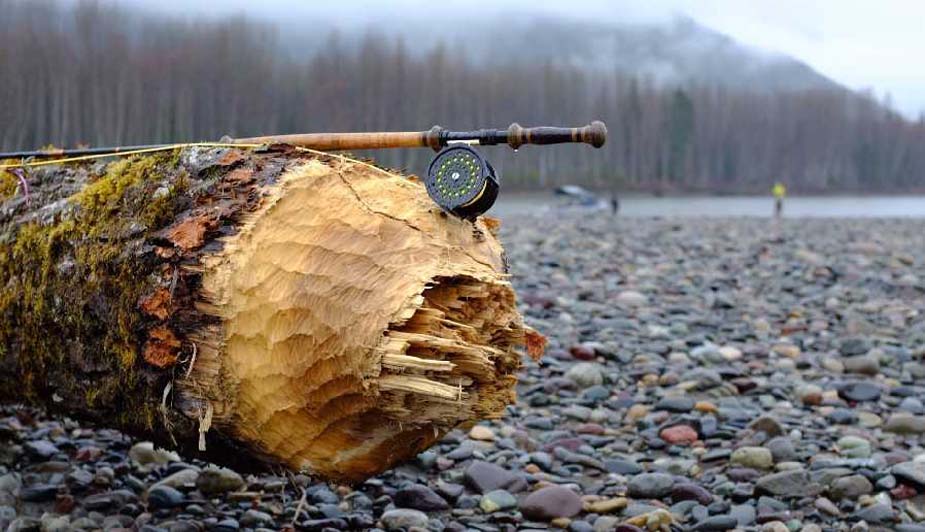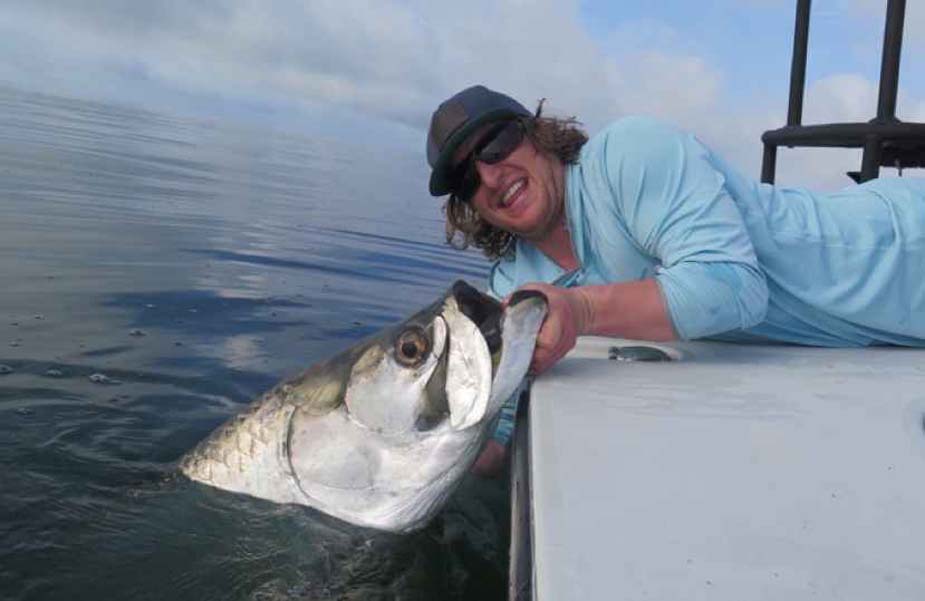
In the Northwest the beavers are big. Photo Bob Meiser – R.B. Meiser Fly Rods LLC. (541) 770-4766
The Dynamic Cast
By Skip Clement
A practiced Dynamic Caster with a two-handed butt extension can cover all fresh and saltwater animals except for Megalops – for example. The latter can sometimes claim the need for 100-foot casts.
I was losing it
Too many years of the contact sport of football undid some bodily connections in my knees, and then devotion to tennis and fly fishing took their tolls, respectively, on my back and shoulder. Later in life, a crusade to master the game of tennis caught up with me in my mid-70s. Arthritis, bone deterioration, and a knee replacement slowed my fishing.
Medically advised to stop eating Ibuprofen [nonsteroidal anti-inflammatory drug] like peanuts had for a long time enabled conventional over-hand casting for tarpon, snook, and redfish in South Florida and then for trout, stripers, crappie, and basses here in North Georgia.
Physical difficulties started limiting my game time to half-days, then for only a few hours before a break was in order, then self-limiting myself to twice a week.

Single-hand fly rod anglers may think that there is no need to use two-handed rods for the details of trouting techniques. Their point is valid. But many fly rod anglers now desire to utilize two-handed rods for their applied Trouting techniques, not only for their efficiency and effectiveness but, more importantly, simply for the joy of using lightweight two-handed rods while pursuing their favorite smaller game fish.
When I canceled a trip to the Bahamas and then a trip to Alaska, I thought the end was upon me
One last shot before being put to pasture would be fly fishing tenkara style, a type of fishing that is more ancient than western fly fishing. It was invented by the Japanese peasant class several centuries ago. It was satisfying and surprisingly more fun in some ways than conventional fly fishing.
But I was missing fly casting rod and reel, conventional Western-style
I began switching casting with lower weight and shorter rods and noticed that some spey casts did not aggravate my shoulder, and I could manage the back discomfort. As I got bolder with rods in 6/7 weights and higher, conventional 9-foot rods were not meant to be comfortably spey cast—even roll cast.

When it comes to the efficient delivery of aggressive short two-handed rods, the marriage of rod and line is crucial. This issue has come a long way in recent years, with major line manufacturers now offering shooting heads that are a perfect match for these rods in both fresh and saltwater environments. But the real advantage is in the customization. We design and build our own lines, and can provide custom-built, grain-matched line systems for these powerful rods. This means your equipment can be specifically designed to meet the unique demands of your fishing environments.
Voila, I knew the guy who invented switch casting
I went to Bob Meiser, and he got me into his 909 CX Two-Handed rod, a 9′ 9″ long ‘switch’ rod. I could take advantage of underhanded casting without any pain.
With the 909 CX fly rod, my dominant shoulder, arm, hand, and lower back were not nearly as engaged when casting shorter conventionally lengthed fly rods. However, when using my 909, I was able to gain considerable distance with the roll casts—a casting motion that is the granddaddy of all spey casts.
Bob Meisner’s rods are expensive
I needed an inventory overhaul, and living on a fixed income and slowly losing purchasing power, I was in a financially limiting league of my own. I could not buy an inventory of fly rods – at least five rods, maybe six at over $800 each.
As shown in the YouTube video below, wholeheartedly embracing the Dynamic Cast can be a game-changer for any fly fisher, but it is a godsend for the weak in the herd.
NOTE: Feature image by Bob Meiser.
Dynamic Cast – go to the head of the class
Ola Spång shows how to get some extra distance in the roll cast! We switch from static to dynamic! We let the line jump, fly, touch, and go! There are so many names for this cast, which is the foundation of water-anchored casts! I use this cast and variations for at least 70-80 % of my fishing casts! It might take some practice, but man, it’s worth it! There is still plenty of time before spring, so make the best of it! Practice makes perfect—Sameo channel.


